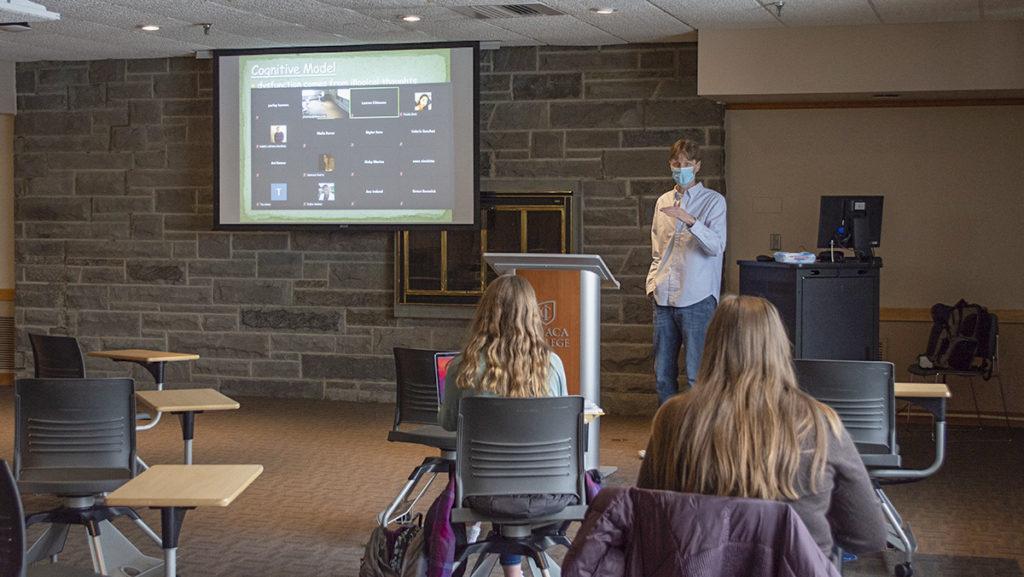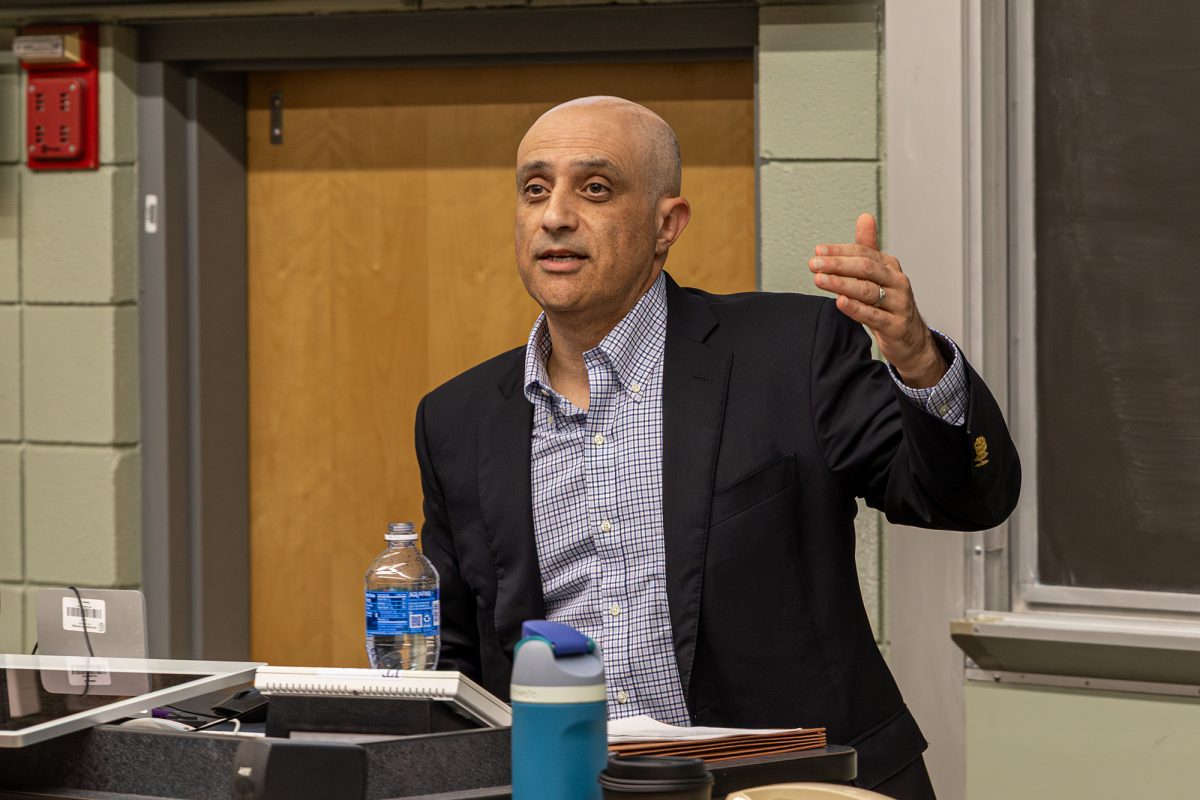Ithaca College students are adjusting to taking classes in person again for the first time in approximately 10 months due to the COVID-19 pandemic, but are facing some challenges with the hybrid model of instruction.
The spring semester started with fully online classes Jan. 25, and in-person classes started Feb. 8. This semester, there are 10 classes that require 100% in-person instruction, 1,143 hybrid classes, 139 online asynchronous and 685 online synchronous classes, according to HomerConnect. In Fall 2020, there were 42 hybrid classes, 265 online asynchronous, 1,651 online synchronous classes and no classes that required 100% in-person instruction. Professors had the ability to choose what modality they would hold their classes in, meaning students can have a different modality for each class.
Sophomore Madeline Miele said that out of her five classes this semester, only one is fully online and the rest of her classes are hybrid.
She said that at first, it felt strange having some students in a classroom and others on a Zoom screen, but it is an adjustment she has gotten used to. Miele said she felt like professors had time to prepare to be in the classroom again, despite the return to campus causing some worries for her.
“I do get anxious sometimes just because you’re sitting there and being like, ‘We’re in a pandemic and in a class,’” she said. “Then I remember all the precautions with testing and everyone wearing masks and sitting far apart.”
The college introduced policies for COVID-19 testing twice a week, mask-wearing on campus and social distancing to keep students, faculty and staff safe. Larger spaces on campus, like the Emerson Suites and the Klingenstein Lounge in the Campus Center, have been converted into classroom settings to maximize social distancing.
Sophomore Angelina Postorivo said she feels like students and professors have made sure everyone is being safe when in the classroom.
“Everyone that I’ve been in class with has actually been like, ‘Has everyone washed their hands? Does anyone need more towels?’” she said. “Everyone in the classroom, including the professor, has been really good about the rules.”
Miele said she is glad there are limits to how many students can be in a classroom at a time. She said if all students in one class were allowed in a classroom at a time, she would not take her classes in person. Miele said she has a class of approximately 20 students, but there are usually approximately 10 students in the classroom at a time.
She said her professors have seating charts that allow them to know which students are sitting close to one another in case someone tests positive for COVID-19. She also said she likes how she can choose to take a class from her room one day if she does not want to be in person.
“If you wake up and you’re just not feeling mentally able to go in, you can just send the professor an email or some of them you don’t even need to notify them, you can just log onto Zoom,” Miele said.
Freshman Alison Hitchen is also on campus this semester and has three classes that she takes in person.
“I’m always in person in my in-person classes,” she said via email. “I feel as if the ones who are on Zoom do not get as good of an experience as we do in the classroom because the professors mainly focus on the ones who are in the classroom.”
Hitchen said that while she usually attends class in person, it seems like students on Zoom might not get the best view of the professor or the board and she said it seems difficult for the professor to hear them.
“Just observing the atmosphere in the classroom, it is easy to see that students on Zoom are often neglected,” she said.
David Salomon, associate professor in the Department of Art History, said one of his biggest challenges has been trying to connect with students in the classroom and students on Zoom.
“It is harder to judge the engagement of students who are attending remotely,” he said via email. “I’m still working out how to have meaningful interactions between students in the room and students on Zoom.”
Salomon said that when he is looking at the camera, he does not feel like he is addressing the students in the classroom. He also said it has been difficult to use whiteboard features on Zoom, and he cannot point at a presentation being shown in class because students on Zoom cannot see what he is doing.
Postorivo said she feels like her professors are trying to keep everyone — whether they are in the classroom or on Zoom — engaged, but it is also difficult. She said she has been in class via Zoom this semester and has felt left out by professors.
“I’ve also noticed [professors] kind of put [students on Zoom] at the end of everything in class, and they’ve kind of gotten cut off a few times during our class,” she said.









